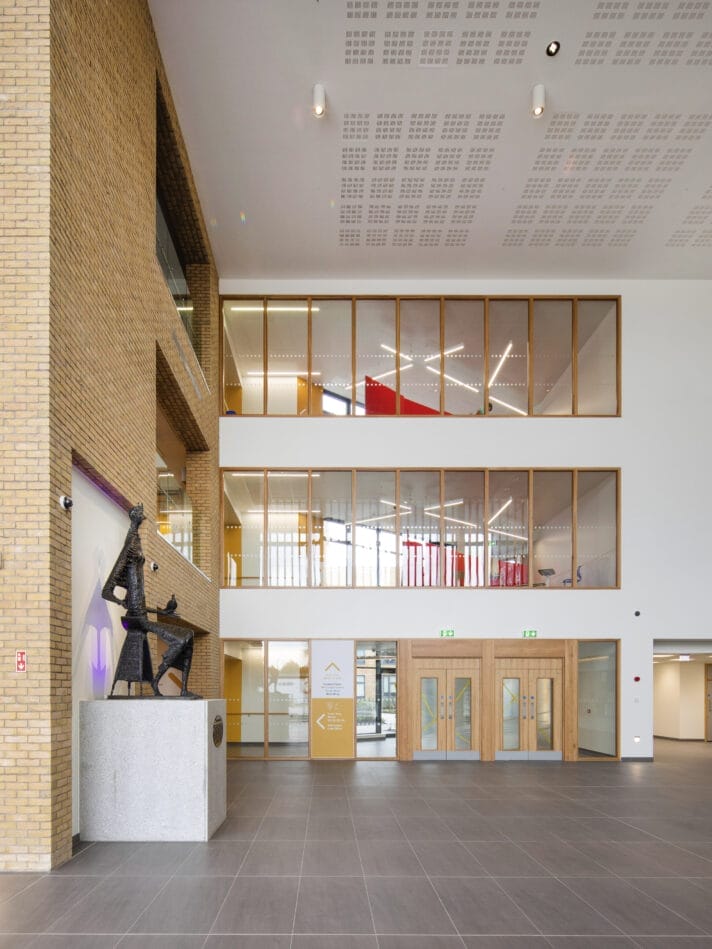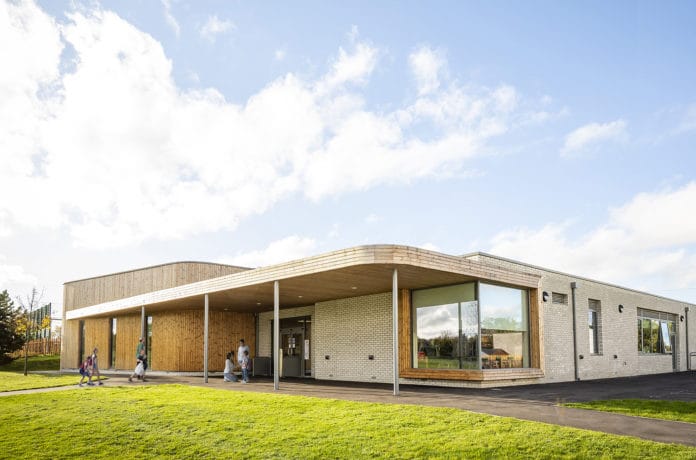
Recently published on e-architect, this article explores the synergies between SEN and dementia care design.
The education and healthcare sectors serve very different purposes. However, there are some close parallels between the sub-sectors of dementia care in healthcare, and Special Educational Needs (SEN) in education. In recent years, there has been a significant increase in specialised facilities for both, with a recognition that each requires a tailored approach rather than being added onto more mainstream facilities.
“Dementia care has typically been fitted into hospital accommodation, while provisions for SEN have traditionally been incorporated into the standard school system.”
By shoehorning these specialisms into more mainstream facilities, the user experience can never be optimised and a wider variety of different needs cannot be met.
Generally, a person with a diagnosis of dementia may lose their more recent memories, leaving them with memories of their earlier life experiences. In some cases, they also experience changes in behaviour and cognition, which can make it appear as if they are reverting to their childhood behaviours when, in fact, they are losing the adult memories that help them navigate the world. Similarly, individuals who are born with a learning disability find it difficult to acquire the adult memories that help them navigate the world independently.
Therefore, one of the major parallels that underpins both user groups is that they may interact with the world around them in similar ways. Our responsibility as architects is to design facilities that will improve the lives of their users and address their needs with sensitivity and understanding. What are some of the key considerations to bear in mind?
Layout and wayfinding
“Our design […] here uses certain colours to represent different subjects in a clear way, enhancing the integration of multiple schools and subjects in one place.”
When it comes to building layout, simplicity of design works best to facilitate wayfinding without additional signage (which could be misunderstood). This promotes independence of movement and orientation, making the individual feel more assured. Achieving this involves ensuring the correct adjacencies that allow for freedom of movement without the need for extended travel periods where an individual can become confused. Logical layouts not only assist the person living with the disability, but also enable any necessary assistance to be successfully put in place, including the provision of security if required.
Wayfinding can be assisted by floor and door demarcation, as implemented within the Altnagelvin North Wing hospital scheme that we worked on in Northern Ireland, where design features include colour-coded doors and skirting margins that clearly identify doorways for patient access. Buttercup yellow is a standard colour use request from dementia Trusts, as it is more easily recognised as vision deteriorates. Similarly, the Penarth Learning Community scheme, which we delivered for the Vale of Glamorgan Council, co-locates mainstream and Additional Learning Needs (the equivalent of SEN in Wales) students within an inclusive community. Our design strategy here uses certain colours to represent different subjects in a clear way, enhancing the integration of multiple schools and subjects in one place.


Stimulation
“Within an educational setting, this can improve their learned experience while sympathetically addressing individual needs; for dementia care, this can keep the mind and body active.”
It is recognised that people living with dementia and SEN can both benefit from stimulating environments. Within an educational setting, this can improve their learned experience while sympathetically addressing individual needs; for dementia care, this can keep the mind and body active, which can have great benefits in terms of slowing the progression of the condition. Therefore, a balance is needed between allowing for creativity and stimulation whilst maintaining a safe, secure environment, with both demographics benefitting from integrated rehabilitative landscapes where movement is encouraged.
Routine
“For many people with either a cognitive impairment or SEN, keeping to a routine is important and aids emotional regulation.”
For many people with either a cognitive impairment or SEN, keeping to a routine is important and aids emotional regulation. Those living with dementia benefit from repeated activities which can have a positive effect on their short-term memory recall, while SEN pupils can find routines calming, reassuring and familiar. The Penarth Learning Community provides a multi-partnership approach to the delivery of educational and medical support through the integration of Children’s Services and Local Health Board staff onsite. This not only gives students with profound and multiple learning difficulties access to specialist care but also offers stability, routine and familiarity through interaction with regular staff.
As we see an aging population with an increased prevalence of dementia, we also see an encouraging increase in specialist facilities that cater for those living with cognitive impairments but dedicated design guidance is still limited. SEN provision, meanwhile, has a long history of research and, subsequently, more established guidelines for designing inclusive facilities. This gives us the opportunity to learn from and replicate elements of these successful design principles for dementia-specific resources.
Difficulty communicating and the exhibition of challenging behaviour is now more widely understood as the expression of unmet needs. By designing facilities that are sympathetic to the users and their unique requirements, we can help to provide stability, and help to improve their quality of life and experience.




